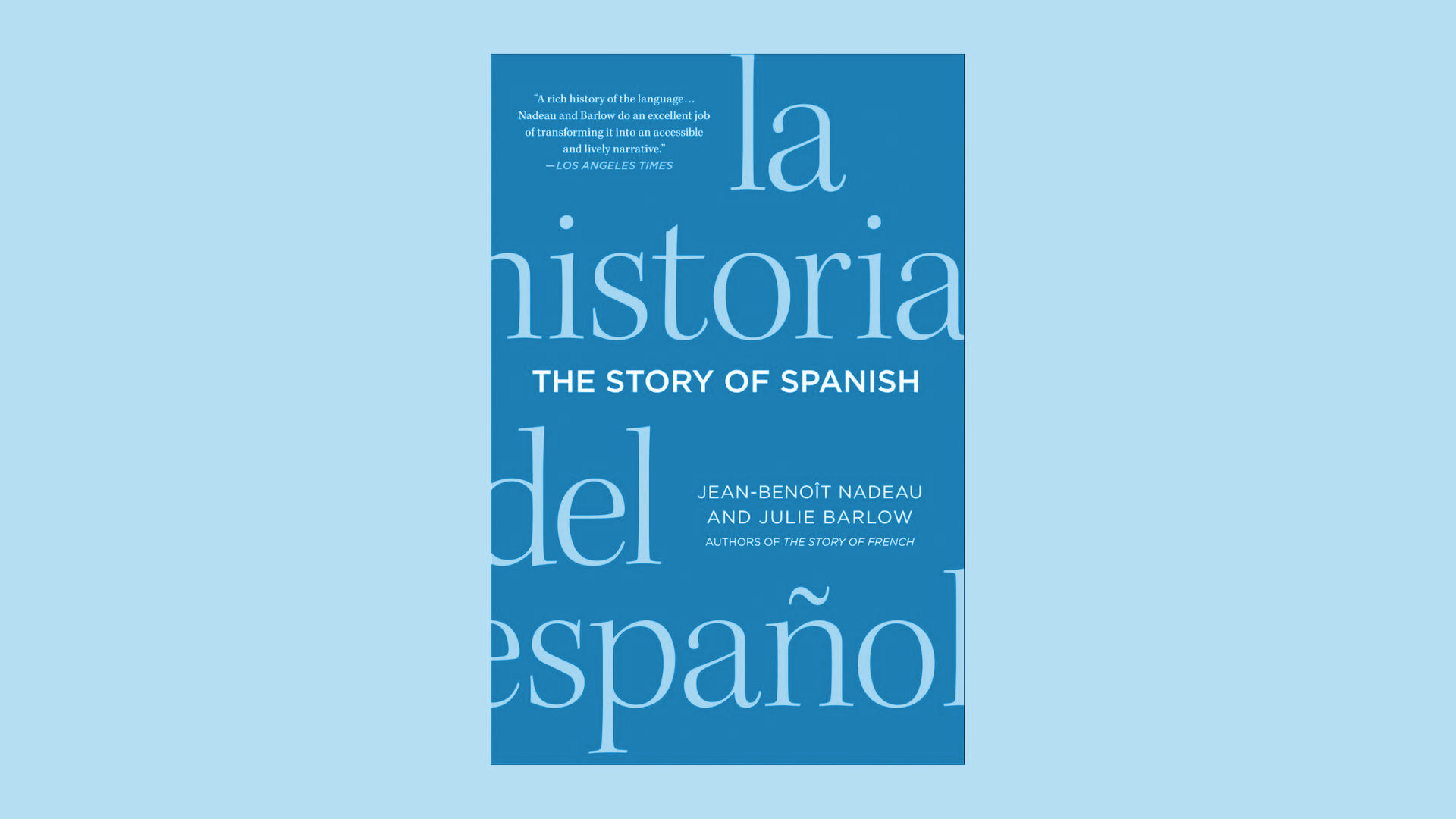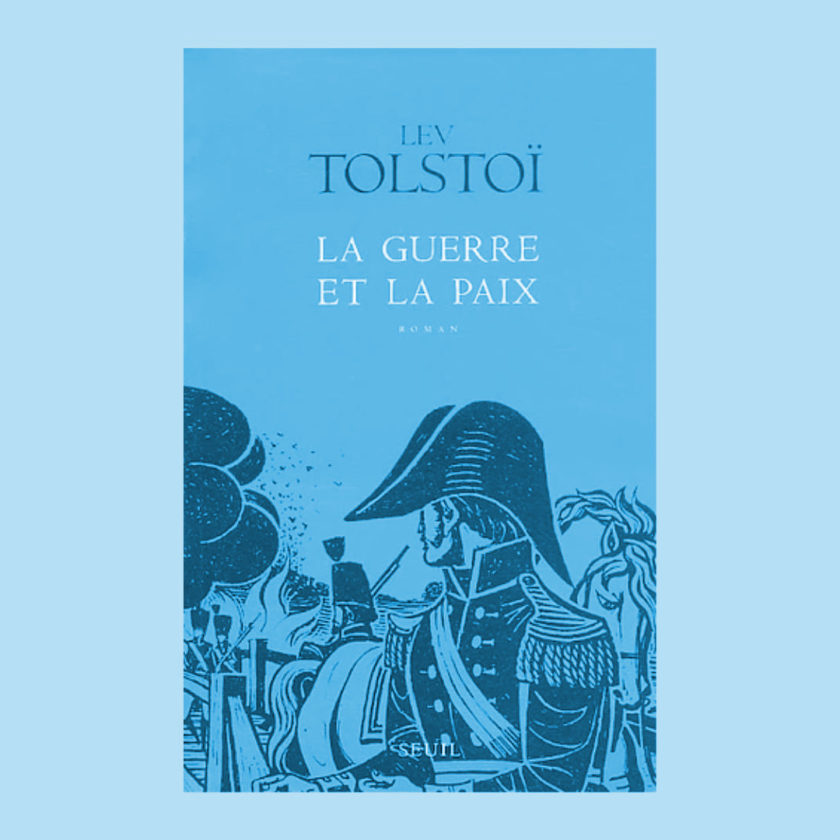I. General introduction and approach to the book
Spanish, the second or third world language depending on the criteria measured, occupies a central place in the lives of more than 500 million people. The result of a long historical evolution, it is today the official language of 21 countries, mainly distributed between Latin America and Spain, with a presence in Africa (notably in Equatorial Guinea). However, despite its role as a cultural and identity vector, Spanish is lagging behind in key areas such as science, technology and innovation. Unlike English, which dominates the academic and technological spheres, Spanish maintains its influence thanks to its cultural diversity and its influence in art, literature and the creative industries.
The cultural importance of Spanish extends far beyond linguistic borders. It is manifested in world-renowned art forms such as tango, flamenco, and modern genres such as Tex-Mex. Iconic figures of Hispanic literature, such as Gabriel García Márquez, have given the language lasting academic prestige, while artists such as Pedro Almodóvar and Shakira have exemplified its contemporaneity and ability to adapt to the modern world. However, this cultural richness is not enough to compensate for the lack of influence in the scientific field. Comparatively, patents filed in Spanish or scientific contributions remain low, which limits Spanish in international spheres of innovation.
A. Narrative approach and purpose of the work
The authors, Jean-Benoît Nadeau and Julie Barlow, adopt an anthropological and biographical approach to tell the story of Spanish. Rather than a simple linguistic exposé, the book presents Spanish as a living character: an entity that is born, develops, adapts to historical circumstances and social upheavals, all the while maintaining its own personality. This biographical angle not only allows us to follow its expansion over time, but also to understand how this language has evolved under the influence of various cultures and eras.
Thus, the work is a continuation of the authors’ previous book (The Story of French), where they had explored the history of the French language in a similar way. They treat Spanish not as a simple language, but as a cultural, historical and identity phenomenon, shaping Spanish-speaking societies as much as it is shaped by them.
Key questions explored in the book
This approach raises fundamental questions: what does it really mean to be Spanish- speaking in our contemporary world? The Spanish language is much more than a communication tool; it structures the identities of its speakers through their culture, their thought and their perception of the world. The authors thus attempt to highlight the role of language as a vector of collective identities and as a means of individual expression.
Finally, the book thoroughly illustrates the impact of Spanish on the arts, societies, and identities while returning to the question of its future: how can this language continue to adapt and thrive in a rapidly changing world? The history of Spanish, as described in this captivating book, proves that this language has always known how to enrich and transform itself, thus ensuring its fundamental role in the history and future of Hispanic
cultures.
II. The Origins of Spanish and its Initial Formation
The history of Spanish begins long before the arrival of the Romans, with roots in the languages and cultures of the pre-Roman Iberian Peninsula. Before Latin became the dominant language, the territory was home to indigenous peoples who spoke a variety of languages. These local languages, although mostly extinct, have left a lasting legacy in the lexicon of modern Spanish. For example, words like galápago (turtle), silo, puerco (pig), and toro (bull) are evidence of this ancient influence. These words, integrated into the Spanish vocabulary, recall the agricultural practices and wildlife important to indigenous civilizations.
A special case is that of the Basques, whose pre-Indo-European language, Euskera, exerted a notable influence. Although geographically limited, this language has left a lasting mark on modern Spanish. Among the most emblematic contributions are the word izquierdo (left), which stands out for its Basque origin and its absence in other Romance languages, as well as the introduction of the famous “rolled r”, a phonetic characteristic specific to Castilian. These examples reveal the linguistic and cultural interconnection in a period marked by territorial fragmentation and the diversity of peoples.
However, despite the interest in these influences, the available information on pre- Roman languages remains limited. Unlike what Julius Caesar documented about the Gauls in his Commentaries on the Gallic Wars, the Romans left few written records on the languages and peoples of the Iberian Peninsula. The reconstruction of linguistic history therefore relies on fragments, such as inscriptions on epitaphs, marked pottery shards or other archaeological remains. These clues allow us to better understand the progressive evolution of languages in this territory before the arrival of Latin, but they remain fragmentary.
B. The fundamental contribution of Latin with the Roman occupation
The Roman occupation represents a decisive moment for the linguistic history of the Iberian Peninsula. After centuries of linguistic diversity, the Roman conquest introduced Latin, which would become the basis of Castilian and the other Romance languages of Spain. Vulgar Latin, used by soldiers, colonists, and in the administration, was established as the vehicular language. Over the centuries, this language gradually supplanted local idioms, marking a major linguistic rupture. However, Latinization was not immediate and took several centuries to fully establish itself.
Romanization allowed a progressive transformation of Latin into “proto-Spanish”, a form of local Latin evolving under the phonetic and grammatical influence of indigenous languages. This process explains particular characteristics of Castilian, such as the simplification of certain Latin sounds or the reinterpretation of grammatical structures. This modification is part of a broader linguistic phenomenon specific to the Roman Empire, but it followed trajectories specific to the Iberian Peninsula.
The Romans themselves were initially skeptical about the conquest and colonization of Hispania. Considered a peripheral and undesirable region, Hispania did not initially interest the Romans. They saw the land as wild and inaccessible, but the strategic importance and agricultural and mineral resources of the region eventually led them to consolidate their control. Although their domination was military and political, it also favored the spread of Latin as a tool of integration and communication.
This contribution of Latin was vital for the evolution of Spanish. Roman writings and the infrastructures developed by the colonizers reinforced the presence of Vulgar Latin throughout the peninsula. By breaking down linguistic barriers among the different indigenous cultures, Latin became the common linguistic base, preparing the ground for future transformations.
In this first phase of linguistic formation, Spanish emerged as a fusion between indigenous linguistic traditions and the dominant colonial language. While pre- Roman influences provided lexical and phonetic richness, the imposition of Latin by the Romans acted as a linguistic unifier, establishing solid foundations for the future development of the Ibero-Romance languages. These two periods – pre-Roman and Roman – therefore constitute the foundations from which Spanish began its historical evolution.
III. Post-Roman evolution: major historical ruptures
The evolution of Spanish after the fall of the Roman Empire takes place in a context of major historical and cultural transformations. The successive invasions and occupations, particularly those of the Germanic peoples and the Arabs, as well as the Reconquista, profoundly influenced the language, marking important ruptures in its development.
A. The influence of the Germanic invaders
After the fall of the Roman Empire, the Iberian Peninsula was invaded by several Germanic peoples, such as the Suebi, the Vandals and especially the Visigoths. Among the latter, the Visigoths dominated from the 5th to the beginning of the 8th century. However, their influence on the development of the Spanish language remained relatively limited.
The Visigoths, although originally Germanic, quickly adopted Latin, which remained the administrative and vehicular language of the region. Their linguistic integration was so complete that their own language disappeared in a very short time, in favor of Vulgar Latin, the basis of all Romance languages. This rapid adoption of Latin culture and language explains why their lexical contribution to modern Spanish is modest. Nevertheless, some lexical borrowings inherited from this period remain, mainly in the military and legal domains. For example, words such as guerra (war) and robar (to steal) come from Germanic, as do some proper names (Fernando, Elvira).
Although the linguistic traces left by the Visigoths are discreet, their symbolic contribution was indirectly significant, notably in the administrative structure and in the idea of a unified kingdom, later taken up by the Christian kingdoms during the Reconquista.
B. Arab domination: 711-1492
The Muslim invasion of the Iberian Peninsula in 711 marked a period of almost eight centuries that had a much more profound impact on the Spanish language. Following this conquest, a large part of Spain fell under Arab domination, forming Al-Andalus. Coexistence between Christians, Muslims and Jews was established, providing a context of relative cultural and linguistic tolerance. This cohabitation allowed for an extremely rich intellectual and cultural exchange, profoundly influencing the fields of language, science and the arts. Arabic became, for several centuries, a predominant language in many spheres, particularly in those of administration, agriculture and of science. As a result, thousands of Arabic words were integrated into the Spanish vocabulary, often relating to technological or agricultural innovations introduced by the Arabs. Among these borrowings are terms such as aceituna (olive), almohada (pillow) or álgebra (algebra). The Arabic influence is also found in toponymy (place names such as Guadalquivir or Albacete), as well as in expressions and grammatical forms that enrich the regional variants of the language.
In addition to vocabulary, the cultural influence of the Arabs shaped the intellectual life of the region. The Arabs introduced or transmitted advances in fields such as philosophy, medicine, mathematics and architecture. Architectural masterpieces such as the Alcázar of Seville or the Mosque-Cathedral of Córdoba bear witness to this period.
However, as the Christian kingdoms of northern Spain gradually launched the Reconquista (retaking territories under Muslim rule), Arabic saw its role diminish. From the 13th century onwards, the process of “re-Latinization” began under the influence of the Christian kingdoms, particularly that of Castile. Once Christian power was fully reestablished in 1492 with the fall of Granada, Arabic almost completely disappeared from the administrative and public landscape, although its lexical and cultural influence persisted.
This “linguistic cleansing” coincides with the affirmation of Castilian – a dialect of the Castile region – as the dominant language. Under the Catholic Monarchs, Isabel of Castile and Ferdinand of Aragon, Castilian is standardized and adopted as the official language of the new unified Spain, through legal, religious and administrative texts. This process marks the beginning of the transition of Castilian to a hegemonic role throughout Spain, announcing its future colonial expansions.
These major historical ruptures – the minor but structuring impact of the Visigoths, the important cultural and linguistic influence of Arabic, and then the reaffirmation of Castilian as the dominant language after the Reconquista – constitute essential milestones in the history of Spanish. These transformations show how political and cultural upheavals have shaped the language we know today, endowing it with remarkable richness and complexity.
IV. Standardization and consolidation of Castilian as a national language
Spanish, as we know it today, was built through a process of standardization and consolidation that allowed Castilian to establish itself as the dominant national language in Spain. This process, which began in the Middle Ages, was reinforced under the influence of the Catholic Monarchs, as well as through campaigns of codification and regulation carried out by major institutions such as the Royal Spanish Academy. The emergence of Castilian as a common language played a decisive role in the linguistic and political unification of Spain, as well as in its global expansion.
A. Birth and dominance of Castilian (castellano)
The linguistic unification of Spain truly begins with the rise of Castilian (castellano), a dialect that originated in the region of Castile, in the center of present-day Spain. During the Middle Ages, when Spain was divided into several kingdoms, each region spoke its own dialect or language. However, Castilian gradually became established thanks to its adoption by the kings as an administrative, legal and religious language.
The Catholic Monarchs, Isabella of Castile and Ferdinand of Aragon, played a decisive role in this process. At the end of the Reconquista, marked by the fall of the Muslim kingdom of Granada in 1492, they adopted Castilian as the official language of the unified kingdom of Spain. They used this language to consolidate their central power, particularly by imposing it through administration, the management of laws and communication between the different territories. Linguistic centralization made it possible to unify a Spain that had until then been culturally and linguistically fragmented.
A fundamental milestone in the codification of Castilian dates back to the 13th century with King Alfonso X, known as “the Wise”. Under his reign, the written use of Castilian developed for the first time for legal, scientific and literary purposes. It was in particular through his legal work Las Siete Partidas, written in Castilian, that he affirmed the role of this language in the face of the traditionally used Latin. This was thus the first step towards the standardization of Castilian as a literary and legal language, providing it with a more structured vocabulary and grammar.
B. Role of the Royal Spanish Academy (1713)
The true standardization of the Spanish language, however, came in the 18th century, with the creation of the Royal Spanish Academy (Real Academia Española, RAE) in 1713. Inspired by the French Academy, the RAE’s mission was to standardize and preserve Castilian as a national language. Its motto, “Limpia, fija y da esplendor” (“it purifies, fixes, and gives brilliance”), sums up its objective well. It was to cleanse the language of excesses or variations deemed unnecessary, to establish precise grammatical and spelling rules, and to enhance the quality and brilliance of Castilian.
The RAE promoted a simplified and standardized orthography, unifying practices that until then had varied considerably between regions. It also published major works, such as the first official dictionary of the Spanish language (Diccionario de autoridades) in 1726, followed by grammars and normative treatises that served as a reference for all Spanish speakers. This enterprise played a crucial role not only in the consolidation of Castilian in Spain, but also in its expansion throughout the colonial empire.
This work of codification not only targeted internal linguistic unity, but also
allowed Castilian to maintain a link between the different regions of Spain and its colonies in America. In a growing Spanish-speaking world, this helped to preserve a certain coherence, although regional variations still exist today.
Ultimately, the birth and dominance of Castilian as a national language is based on a conjunction of historical, political and cultural factors. From the pioneering role of Alfonso X the Wise to the standardization orchestrated by the Royal Spanish Academy, Castilian has established itself as a symbol of identity, national unity and imperial expansion. By codifying a standard usage, these efforts transformed a regional language into a universal tool, thus ensuring its lasting influence in world history and culture.
V. Colonial Expansion and Spanish in the New World
The expansion of the Spanish language beyond the borders of the Iberian Peninsula represents one of the most significant aspects of the history of Spanish. With the discovery of America by Christopher Columbus in 1492 and the colonization that followed, Spanish quickly gained a foothold in this new region. Over the centuries, it became the dominant language of much of the hemisphere.
Western, deeply influencing local cultures and transforming itself in return
through contact with indigenous languages.
A. The spread of Spanish in Latin America
The colonization of the Americas from the 16th century onwards marked an unprecedented geographical expansion for Spanish. The conquistadors, followed by missionaries and colonists, imposed Spanish as the official language in the conquered territories. In a context of political, economic and cultural domination, Spanish was systematically used to administer the colonies and govern the local populations.
Missionaries, in particular, played a key role in the spread of Spanish, adopting it as an essential tool for the conversion of indigenous peoples to Christianity. Through religious education, translators, and the production of catechisms in Spanish, they not only spread the language among indigenous elites, but also shaped cultural interactions that contributed to linguistic assimilation over several generations. However, this massive diffusion of Spanish came at the expense of indigenous languages, most of which lost their status to Spanish, although some survived in coexistence with it.
With the mixing of cultures, colonial Spanish was also enriched by the adoption of many words from indigenous languages. These borrowings often reflect concepts, objects or realities specific to the new lands discovered, for which there was no equivalent in Spanish. For example, terms such as canoa (from the Caribbean), chocolate, tomate and puma (from Nahuatl and Quechua) entered the Spanish lexicon and, through it, several other European languages. This process highlights the dynamic interaction between Spanish and local cultures, giving rise to a language marked by a regional diversity that is still perceptible today.
B. Problems of linguistic unity
Although Spanish was adopted as the common language of Latin America, its development was not uniform. Across the vast geographical expanses and in the absence of a central authority to regulate the language in the colonies, regional varieties and distinct dialects began to emerge. These “linguistic regionalisms” are reflected in phonetic, grammatical, and lexical differences between Spanish in Spain and that of Latin America. For example, there are notable variations in the use of the pronunciation of the final s, grammatical differences such as the pronounced use of voseo (use of vos instead of tú in Argentina and Uruguay), or in the vocabulary, enriched with terms borrowed from indigenous languages depending on the region. The consolidation of these differences was amplified after the independence of Latin American countries in the 19th century. With the fall of the Spanish Empire, each new republic began to develop its own linguistic norms, often influenced by regional particularities and local contexts. The absence of a centralized colonial authority, such as the Royal Spanish Academy in Spain, resulted in relative autonomy in the evolution of Spanish in these countries. This led to an enrichment of the language, but also to some discrepancies in the way it was spoken across different regions.
However, despite these differences, the common linguistic identity remains strong. The Spanish language continues to function as a cultural and political bond unifying the Spanish-speaking peoples of Latin America, while allowing for varied local expressions. Today, thanks to standardization initiatives (notably through the joint efforts of the Spanish language academies in the different Spanish-speaking countries), a relative unity of Spanish persists, despite regional diversity.
In summary, the expansion of Spanish in the New World was marked by a double movement: a massive diffusion and a rooting in colonial societies, associated with an enrichment and linguistic diversification through contacts with indigenous cultures. If Spanish became a unifying vehicular language throughout Latin America, the independence of the countries and the geographical distance from Spain favored the emergence of regional varieties, which enrich the language while testifying to its flexibility and capacity for adaptation.
VI. Contemporary Spanish in a Globalized World
In the era of globalization, Spanish occupies an essential place in the world linguistic panorama. With its historical origins and past geographical expansion, it is now one of the main international languages, spoken by more than 500 million people. However, this position is accompanied by new challenges, linked to modernity and competition with other dominant languages such as English. Contemporary Spanish is thus at the crossroads between growing international recognition and the challenges related to its uses in a globalized and digital world.
A. Current international presence
Spanish is now emerging as a rapidly growing international language, particularly in the United States and other parts of the world. In the United States, Spanish is experiencing remarkable growth due to the large Hispanic population, which represents approximately 37 million native speakers. This figure makes the United States the second largest Spanish-speaking country in the world after Mexico. Spanish is not only a domestic language, but also a cultural and identity vector for Latin American communities. In addition, it is increasingly becoming a language of learning: it is now the most widely taught foreign language in American schools, demonstrating its practical and professional importance in this context.
Beyond the United States, Spanish is also one of the most widely learned languages in the world, after English, French, and Chinese. It is estimated that around 6 million people study Spanish as a foreign language, attracted by its cultural richness and practical utility. For example, Hispanic media play a key role in the cultural diffusion of the language. Telenovelas (popular television soap operas), Latin music (with international artists such as Shakira, Bad Bunny, or Rosalía), and Spanish-language cinema attract international audiences, thus reinforcing the attractiveness of the language through entertainment. This cultural diffusion also helps to keep Spanish a living, dynamic language capable of competing with other major languages.
B. Modern Challenges for Spanish Speakers
Despite its successes, contemporary Spanish faces several challenges, including the growing influence of globalization, which affects its uses and development. One of the main problems comes from the pressure exerted by English, which dominates in areas such as technology, science, economics and culture. Spanish speakers must therefore struggle to maintain a strong linguistic identity while taking part in this globalized world dominated by a only main language.
The influence of English in Spanish-speaking countries is often manifested through Spanglish, a mixture of Spanish and English, particularly widespread in the United States and in some regions of Latin America. This phenomenon, although inventive and a proof of the adaptability of the language, gives rise to debates. Some see it as a form of decline of purist Spanish and a risk to its coherence, while others consider Spanglish as proof of its flexibility and power of integration in multilingual contexts.
In the digital and technological field, Spanish is trying to make a place for itself, but it is still lagging far behind English. The use of Spanish in the sectors of new technologies, scientific publications or for the development of artificial intelligence is still low. For example, in scientific research, the vast majority of publications are in English, even in Spanish-speaking countries. Although the digitization of content in Spanish is progressing, particularly through user interfaces, digital encyclopedias and software, more efforts will be needed to make it a truly competitive language on the modern international scene.
In conclusion, contemporary Spanish enjoys growing recognition in the globalized world, with a stronger presence in the United States and an undeniable cultural appeal. However, it still faces major challenges, particularly in the face of the hegemony of English and the need to strengthen its uses in the digital and scientific spheres. To fully flourish in the modern world, Spanish will have to continue to evolve, adapt and invest in new linguistic territories, while preserving its rich cultural identity.
VII. Conclusion: What does it mean to be Spanish-speaking today?
Being a Spanish speaker in the contemporary world implies a wealth of identities and complex dynamics. Spanish, with its historical roots and multiple cultural influences, represents much more than a simple language of communication. It embodies a unity in linguistic diversity, and this diversity is both its strength and its challenge.
Unity in linguistic diversity
Across the countries where it is spoken, whether in Spain, Latin America, the United States or elsewhere, Spanish maintains a common identity based on linguistic, historical and cultural elements. However, this unity is manifested in a variety of dialects, accents and regionalisms that make the language rich. Linguistic variations between the different Spanish-speaking regions – whether in idiomatic expressions, specific vocabulary or grammatical differences – testify to the adaptability of Spanish to distinct social, cultural and historical contexts.
Today’s Spanish speakers are thus engaged in navigating this diversity, embracing local particularities while sharing a language that connects them across geographic boundaries. This coexistence of variations enriches not only the language but also the lived experiences of speakers, promoting a sense of community while celebrating each other’s unique identities.
Future influence of language
The importance of Spanish shows no signs of declining. On the contrary, the language continues to grow in importance geopolitically, economically and culturally. Geopolitically, Spanish is strategically positioned in a increasingly multipolar international context. Spanish-speaking countries, particularly those in Latin America, are playing an increasing role in international discussions on issues of development, human rights and the environment, thus placing Spanish at the centre of global political exchanges.
Economically, the Spanish-speaking population represents a booming market, with increasing purchasing power and cultural consumption. The success of Hispanic music, cinema, literature and other forms of artistic expression, particularly on a global scale, attests to the economic influence of Spanish. Spanish-language products and content resonate favorably in a globalized world where cultural diversity is increasingly valued.
Finally, on the cultural level, Spanish continues to evolve and reinvent itself, constantly integrating new elements while preserving its rich heritage. A variety of cultural manifestations, from literature to visual arts, cinema and music, allow Spanish-speaking culture to assert its identity while opening up to external influences. The growing popularity of Spanish-language works internationally, particularly through streaming platforms and cultural festivals, is a testament to this ongoing dynamic.
In short, being a Spanish speaker today means living in a world characterized by a language of exceptional richness and unparalleled diversity. While Spanish continues to adapt to contemporary realities, it remains a central instrument of unity and communication between a multitude of cultures and identities. The future of Spanish is promising, driven by a growing capacity for influence on the world stage, both culturally and economically and geopolitically. Thus, the Spanish language, far from being a simple legacy of the past, asserts itself as a dynamic and essential player in the modern world.





